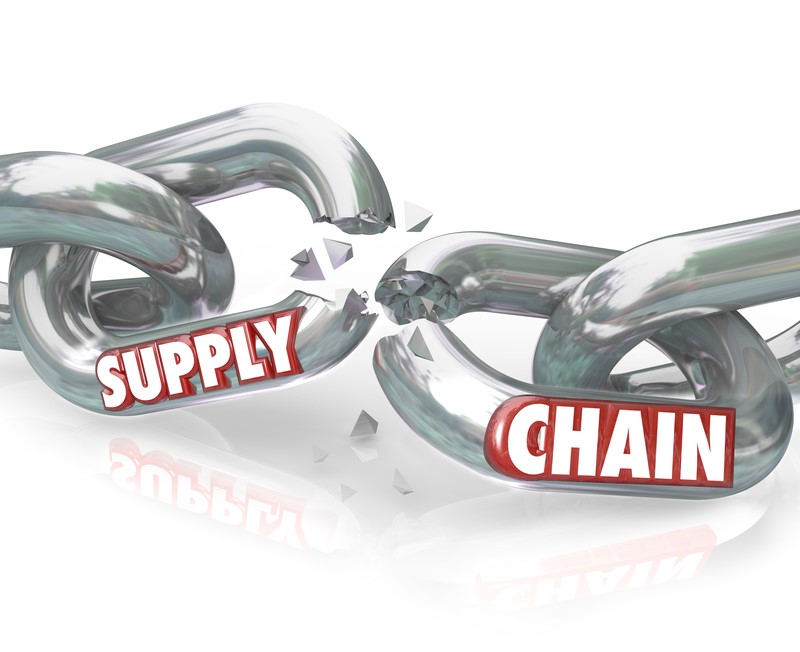According to the Business Continuity Institute (BCI) annual report on global supply chain disruption, 65% of the 400 respondents experienced at least one supply chain disruption in 2017
Loss of productivity was the most common consequence of supply chain disruption in the BCI report. Not only this, but disruptions can impact and delay other projects and damage a company’s reputation. This is why supply chain disruption is a top priority for risk managers.
In the commercial property development sector, supply chains are often incredibly complicated with numerous projects going on simultaneously – each with their own supply chain.
Disruptions range from adverse weather conditions to building material shortages. The secret to handling the disruptions is to anticipate them and put a carefully prepared plan of action into place, thereby limiting any repercussions and not causing any significant impact on the project.
The cost of disruptions
Disruptions invariably add cost to the commercial property development. Therefore, you must have a realistic budget to cover unforeseen costs when something goes wrong. You also need to seek the most cost-effective solutions without compromising on quality in any way.
For example, if you need concrete for a relatively small building development, the concrete producer will most likely prioritise any larger deliveries on their delivery schedule. So plan ahead and schedule the concrete pour long in advance, or do it at night when you will have less competition for the time slot.
Likewise, if you are told by your supplier that the building material will be delayed, you can increase the number of workers in your labour force for the new delivery to make up the time.
Sometimes spending a little extra money can save money in the long-run. For example, x-raying or core drilling to see what is underground on a site rumoured to have obstructions – rather than waiting until you uncover a problem in the middle of a construction which would lead to wasted time and money.
What incidents can happen to cause disruption to the supply chain?
Knowing what possible disruptions could occur can help to plan ahead. Possible disruptors to prepare for include:
- Environmental restrictions/issues
- Occupied buildings and their schedules
- Material availability
- Safety issues or accidents
- Changes in design/client indecisiveness
- Weather
- Planning permission issues
- Unrealistic client expectations
- Labour shortage
Identifying potential areas of risk
The BCI’s survey found a surprising 69% of respondents do not have full visibility of their supply chains. It is wise to understand and know your main suppliers at the very least as they will be responsible for the largest proportion of the profits if things go wrong. However, it is also beneficial to understand how the lower tiers of the supply chain operate so that you can proactively and effectively manage your operational performance in its totality.
You need to know if the suppliers are based in areas at risk of flooding, natural catastrophe or political uncertainty.
You also need to know how financially stable your suppliers are and what plans they have in place for handling potential disruptions. Ideally, have a method in place for routinely checking a supplier’s financial situation.
It is also advisable to record any details of supply chain disruptions if they occur and what actions were taken – to avoid it happening again in future.
The use of information technology is also vital. IT can help you to maintain a robust supply chain through real-time data and information sharing for rapid dissemination, scenario modelling, analytics and programmed responses. IT systems need to be safe, secure and re-routable.
Back up all your data and technical information and accessible in another location in the event of a technical problem or a cyber-attack. The report from BCI found nearly two thirds of the respondents do not use any technology to monitor their supply chain performance. However, IT can play a vital role when investing in supply chain resilience
Finally, make sure that your supply chain management team have all had risk training. Are risk management procedures in place on your supply chain?
Steps to take to avoid disruptions before they occur
Here are some other steps you can take to mitigate disruptions before they occur:
- Assemble project teams early
- Careful and deliberate time-management – focus your attention on your identified riskiest suppliers
- Ensure that the client and your team members have realistic expectations
- Triple check material delivery deadlines
- Create a safety plan that is specific to your project
- Use project management software tools so that you communicate all schedules and costs for the client, architects, subcontractors
- Nurture strong relationships with manufacturers so they go that extra mile for you if you need
- Study historic weather data for the location for your building development
- Establish a schedule and deadlines for when decisions must be made – make deadlines for earlier than you ultimately need them
- When working on occupied buildings or with occupied buildings in the vicinity, make sure you know and understand the occupants schedule
- Make sure insurance and contracts are in place before starting any work
Dynamic operations
Even as you put your risk strategy into place, you will need to adjust it to the dynamics of the market and economic conditions.
A clear corporate structure with clear responsibilities and emergency contacts – defining who will contact who in an emergency – will lead to speedy action if a disruptive event occurs. Supply chain managers can also plan on ways to access emergency fuel and medical supplies.
Ideally, avoid a total dependence on a key supplier by entering into joint supply agreements.
Supply chain risks in construction have perhaps never been more complicated given the large number of parties involved in the design, build and approval of the project – so your approach to disruption management and mitigation is crucial.
However, as much as you can plan ahead, trust your instincts and your experience in a given situation so that you can be proactive and stay ahead of the game.
Anticipating problems is fundamental to limiting construction disruptions.
Alex Norman
Director
Lewis & Tucker Chartered Surveyors
www.ricsfirms.com/office/056444/Lewis-and-Tucker-Surveyors-Ltd














